The Operating Profit Margin Ratio (OPMR) for farms is probably the best or fairest way to compare different farms, of different sizes, with equipment of different ages and conditions, and a thousand other variables.
One case study of a West Central Indiana farm shows the average OPMR for the five years between 2010 and 2014 to be 0.2449, or about 25%. In the very next year (2015), because of very wet conditions, corn production was considerably lower. Combined with lower crop value at market, the OPMR was into negative territory (-0.0356), or a loss just over 3½%. In 2016 it was expected to be on the plus side by 4.61%.
A New Strategy – How to Turn Your Farm Power into a Cash Crop
With a little thoughtful planning and investment, you could decrease the costs of operating your farm by eliminating your need for electrical power from the grid. This amounts to better profit in good years and lower losses in the bad years. There’s even a way to do this for free.
All along the northern edge of your property, or any space where shadows are not a problem, you could contract with the local electrical facility (or an agent) to place their frame mounted solar panels where they won’t shade your crops. They can produce “green power” for the utility, which can then be exchanged for valuable carbon credits. (David Suzuki. et al, 2008)
This depends on the net metering (Polaris, 2017) rules where you live which are supported by 43 states, Washington, D.C., and 4 territories currently (SEIA, 2017). Some states inexplicably forbid selling power back to the utility. Speak to your local political representative to get this changes if your state still hasn’t joined the 21st century. .
In many cases, carbon credits are so highly valued that the utility often pays more per “green” kilowatt than they charge their customers! If that’s true for you, you have a cash crop which requires no planting, no fertilizing, no harvesting, and no maintenance.
Even without the bonus payment, you still get “utility rates” for your excess energy, which is provided as a credit towards your overall use, or acts as a bank where you can withdraw it for free if or when you need it yourself.
The money is generated by energy users (corporations or household users) that that elect to pay slightly more for their power to demonstrate environmental responsibility, to feel better about themselves, or to help promote more green energy production. Many states are actively advancing the cause. (North Carolina Clean Energy Technology Center, 2017)
Let’s go further
Hot water can be an expense on a farm, particularly if you have a lot of hands (workers) that need a shower every day. Solar thermal panels, looking similar to ordinary solar panels, collect the heat of the Sun, and fill insulated tanks with piping hot water (Energy.gov, 2016). You can use just a couple for a house, or as many as you wish for large volumes of hot water.
This has actually become a rather popular way to heat a building by circulating the heated water throughout, either by radiators, or by under-floor radiant heating.
Often that sort of system is completely independent from the system used to heat the household water. In any case it can substantially reduce your natural gas or oil bill for heating water, if not eliminate it entirely.
There’s Still More
Farms have the tendency to be wide open, reasonably flat, and consequently fairly windy. Without tree lines at the edge of properties, a lot of good soil would blow away. But what if you collected some of that energy?
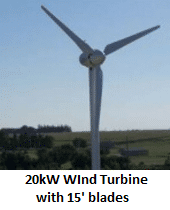
These have 15’ (5m) blades and only need a 22 mph (10m/sec) wind.
They have a design life of 20 years (Polaris2, 2017) and even if you don’t want to own one (or more) you could lease some land to the local utility to install these mono-pole generators. They have a tiny ground footprint and are high enough that you can drive a combine around their bases with ease.
Like solar power, this is green energy which you can sell to the grid (local utility) at a premium price—and they can be placed anywhere there is a steady wind, so they won’t interfere with normal farm activities.
Still Not Enough?
How do you heat the farmhouse, bunkhouse, or even certain portions of the barn? Wood burning is carbon neutral but it involves a lot of effort; electricity is far too costly for that task; fuel oil is the next most expensive; and cheapest, of course, is natural gas. Or is it?
There is a seldom considered option called ground-source heat pump (GSHP) technology. It is only a couple of decades old, and the technology has only gotten better with time. It works with heat added to or removed from the ground beneath you.
Best of all you are in a unique position because you almost certainly already own the appropriate equipment (a backhoe) to do the majority of the work yourself. (Wikipedia, 2017)
- How It Works
As a farmer you know where the frost line is on your property. Typically it’s around two or three feet deep depending on your latitude. Dig a little deeper, and there is a huge reservoir of heating or cooling potential for you to tap.
Putting loop after loop of strong durable piping at the bottom of trenches, and then burying it again, allows you to dump excess heat into the ground for free cooling (air-conditioning), or draw heat from the ground for free heating.
…and save money, too!
Amazingly, for every dollar you put into your heating system you get $4.00 or more of heating or cooling production. How is it possible to get more out than you put in? The answer is in basic physics—you are not generating new heat—you are simply moving it from one place to another.
Think of it like manure production. You buy some livestock; you buy grain to feed the livestock; you invest your time and effort to take care of them; and eventually, they produce manure for you to enhance other aspects of your farming operation.
Now imagine you found a pile of manure that was sitting there. Taking it and using it requires little more effort than transporting it. With a GSHP you’re doing the same thing—moving heat back and forth to where you need it without the necessity of generating it.
Three Basic Methods
Trenching
 This is the most common method, as described above. Your advantage is that you possess the digging equipment, saving you the expense of contracting the work out, which is usually a large part of the cost.
This is the most common method, as described above. Your advantage is that you possess the digging equipment, saving you the expense of contracting the work out, which is usually a large part of the cost.
I’ve not yet seen a family farm that didn’t have a truck garden (produce for personal use). And this is an ideal place for a heat-exchanger.
After you’ve pulled the last of the broccoli, Brussels sprouts, cabbage, cauliflower, beets, carrots, onions, lettuce, and radishes, do your trenching before the ground freezes.
Put all of your flexible piping in place, re-bury it, and make your connections to the GSHP. You’re all set for free heating this winter, and the pipes have an expected lifetime of 50 years.
There is a trivial cost to run the pump in the GSHP, and the blower motor to move the heated or cooled air around a residence, but it is probably equivalent to whatever you used before. Of course, if you are generating your own electricity through solar or wind, that is free, too.
Well, Well, Well…
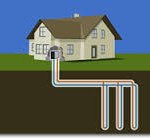
 This is usually used when there isn’t sufficient surface area where you can dig to lay the pipes. Wells (usually three) can be 300’ (100m) deep, to provide as much heating or cooling as required.
This is usually used when there isn’t sufficient surface area where you can dig to lay the pipes. Wells (usually three) can be 300’ (100m) deep, to provide as much heating or cooling as required.
.
Body of Water
Many farms maintain a pond, for fishing if for nothing else. Provided that it is large enough, deep enough, and it doesn’t freeze in wintertime, the heat-exchangers can use the body of water as a heat sink, for a much less expensive and labor intensive solution. Variations include an upstream pickup and downstream discharge of continuously flowing water from a river
How does it work?
 With only a few degrees of difference, how can the ground, or even
With only a few degrees of difference, how can the ground, or even
water, absorb so much heat, or provide heat when required?  In this diagram the blue coils are buried outdoors. The coolant is pumped out to the coils where it absorbs heat from the ground.
In this diagram the blue coils are buried outdoors. The coolant is pumped out to the coils where it absorbs heat from the ground.
It returns several degrees warmer, passing through a liquid with a very low boiling point (e.g. butane and ammonia), which evaporates and goes into a compressor. When the vapor is compressed, all its heat is concentrated, exceeding the boiling point of water.
 It is passed through a second heat-exchanger where it is transferred to the heating system for your farmhouse, or other building. This can be air or water heating as required.
It is passed through a second heat-exchanger where it is transferred to the heating system for your farmhouse, or other building. This can be air or water heating as required.

When cooling is required the red and the blue heat-exchangers in the diagram simply exchange functions so that warm water is sent outside to dump its heat into the ground. It returns cooler, ready to absorb more heat.
The Takeaway
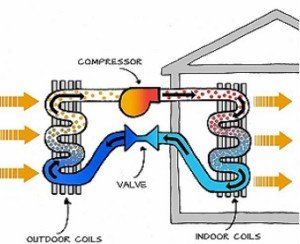 As you can see, it is elegantly simple, low cost, and almost maintenance free. Realizing that these heat-exchangers can run in either direction, this simple diagram tells the entire story.
As you can see, it is elegantly simple, low cost, and almost maintenance free. Realizing that these heat-exchangers can run in either direction, this simple diagram tells the entire story.
Solar panels for electricity can be ground-mounted provided there is a southern exposure. If the structure of your buildings (such as a barn) is sound, solar panels can be placed on the roof, to keep them completely out of your way.
Installing a small wind turbine will generate electricity (and money) every time the wind blows. It is electricity you don’t have to pay for and “extra” that you can sell back, or draw back from the grid for free when you require it.
Roof-mounted solar thermal panels can provide all of your hot water needs, even in wintertime. New hybrid panels have the combined function of both electrical generation and water heating in one unit. This doubles your efficiency and saves space. There is no upper limit to the 30% Federal tax credit for solar photovoltaic (electricity), or solar water heating for residential buildings for systems installed after 2008. (ENERGY.GOV, 2017)
To be completely independent for heating, cooling, and hot-water, the best solution might be geothermal energy. There is a 30% Federal Tax Credit for installation costs, and States & Utilities often offer rebates in the $500+ range for installing such a system. (DSIRE — NC CLEAN ENERGY, 2017)
Profits and expenses for farming can be a roller-coaster ride. A little investment on the side, or a lease arrangement for someone to use a portion of your land while offering you practically no inconvenience, can be a great decision. At the very least it will help to moderate the highs and lows of farm income, evening things out a little bit. Give it some thought, because your neighbors are already thinking about it.
***********************************************************************
Works Cited
David Suzuki. et al. (2008). Solutions are in our nature. Retrieved 07 28, 2017, from David Suzuki Foundation: http://www.davidsuzuki.org/issues/climate-change/science/climate-change-basics/carbon-offsets/
DSIRE — NC CLEAN ENERGY. (2017, 07 28). Programs. Retrieved 07 28, 2017, from DSIRE : http://programs.dsireusa.org/system/program
Energy.gov. (2016). Solar Water Heaters. Retrieved 07 28, 2017, from Energy.gov — ENERGY SAVER: https://energy.gov/energysaver/solar-water-heaters
ENERGY.GOV. (2017). Residential Renewable Energy Tax Credit. Retrieved 07 28, 2017, from https://energy.gov/savings/residential-renewable-energy-tax-credit: https://energy.gov/savings/residential-renewable-energy-tax-credit
Langemeier, M. (2016, April 1). University of Illinois at Urbana-Champaign. Retrieved 07 28, 2017, from farmdocDAILY: http://farmdocdaily.illinois.edu/2016/04/measuring-farm-profitability.html
North Carolina Clean Energy Technology Center. (2017, January). The 50 States of Solar: Q4 2016. Retrieved July 28, 2017, from North Carolina Clean Energy Technology Center: http://ncsolarcen-prod.s3.amazonaws.com/wp-content/uploads/2017/02/Q42016_ExecSummary.pdf
Polaris. (2017). Net Metering. Retrieved 07 28, 2017, from Small Wind Turbines | Small Wind Generators | Community Wind Generators: http://www.polarisamerica.com/wind-basics/net-metering/
Polaris2. (2017). Wind Turbines for Farms | Farm Scale Wind Power. Retrieved 07 28, 2017, from Polaris: http://www.polarisamerica.com/turbines/wind-turbines-for-farming/
SEIA. (2017, June). Net Metering. Retrieved jULY 28, 2017, from SEIA — Solar Energy Industries Association: http://www.seia.org/policy/distributed-solar/net-metering
Wikipedia. (2017). Geothermal heat pump | Ground Source Heat Pump | Geoexchange. Retrieved 07 28, 2017, from Wikipedia: https://en.wikipedia.org/wiki/Geothermal_heat_pump




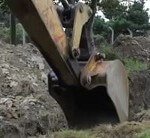

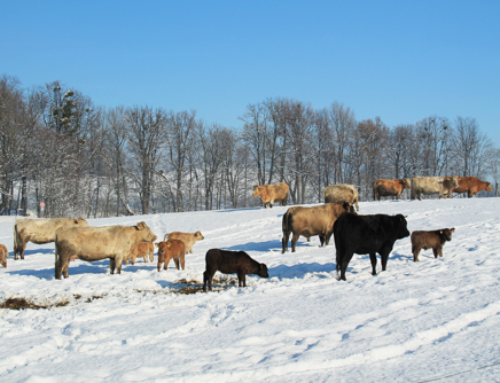
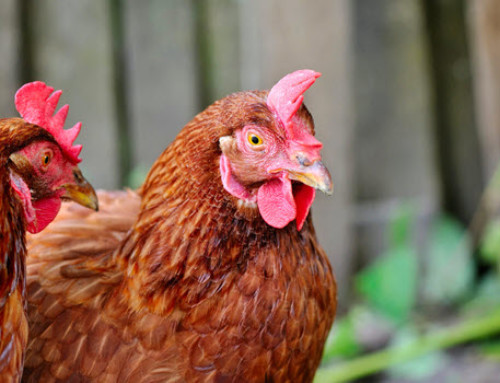
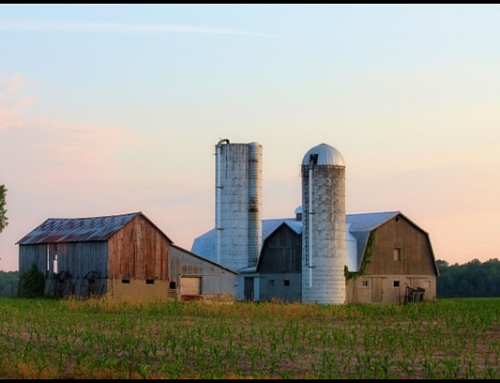
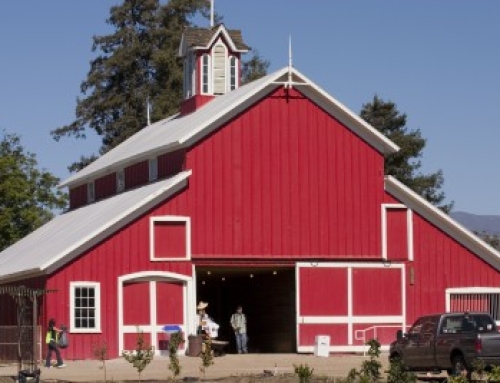
Leave A Comment